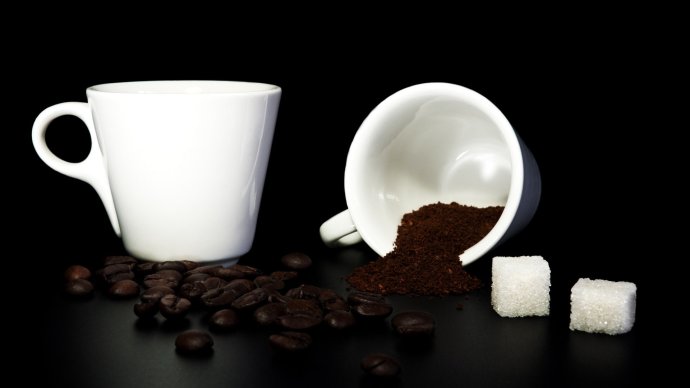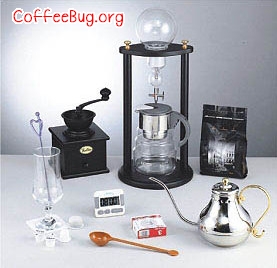Introduction to roasting technology of coffee beans: introduction of baking knowledge and detailed operation process
1. Dehydration:
Generally refers to the baking process below 170 degrees. Different baking appliances require different dehydration time, but it is usually best controlled at 5-8 minutes, depending on the water content of the beans.
two。 Climbing temperature:
Usually, the climbing temperature speed of baking is controlled between 7 and 14 degrees, which is related to the control of firepower. The better climbing temperature speed is about 10 degrees. The climbing temperature speed of beans varies with different water content. The temperature climbing speed of hard beans and seasonal beans (with more water content) should be slow to lengthen the dehydration time, while the temperature climbing speed of soft beans or old beans in the coming year (low water content) should be faster and the dehydration time should be shorter to retain the flavor of beans.
3. Smoke exhaust:
The smoke discharge of baked beans begins to be obvious at 180 degrees, the first explosion becomes larger, and the second explosion reaches the maximum, and the deeper the baking smoke is, the bigger the smoke is. At this time, the air door should be fully open to avoid the smoke attachment of baked beans.
4. Taxiing:
This is the place where most baking beginners ask, in fact, the taxiing action is to cool down or turn off the heat to use the temperature of the boiler to continue baking beans.
The beans are endothermic throughout the baking process, only the first explosion-the second explosion is an exothermic action, it is best not to increase the fire baking in these two stages, otherwise the beans are easy to feel spicy. Taxiing emphasizes that the baked beans can be roasted continuously and slowly by using the residual temperature of the boiler and the temperature produced by the heat release of the beans during the burst period. But the taxiing of the hand net, away from the source of fire, let the beans dissipate heat very naturally. If you want to lock the flavor, you have to use the fan to cool down quickly in order to retain the flavor. Taxiing is not suitable for all beans with all baking degrees. Recently, we have seen a lot of brown friends baking light-baked Yejasuefei gliding down beans, and a single medium-baked Brazilian beans gliding down beans, which is wrong:
Beans before moderate baking (before the second explosion) are usually dropped at any time when the temperature is low, and there is no gliding "drag time" under the beans, which will roast off the flavor of the varieties of beans that should be produced. On the other hand, the beans after the middle and deep baking degree (after the second explosion), it is suggested that the beans should be cooled or turned off to make use of the stable climbing temperature of the boiler, and there should not be any action of adding fire after this stage (the second explosion). Because the bean is exothermic in the burst stage, the temperature will continue to rise, so there is no external temperature for it, so the taste and flavor of the bean will be softer and less irritating.
5. The beans must be cooled immediately after baking, and the faster the better, so that the flavor of the beans can be locked and the loss can be avoided.
The best baking time is 12 ~ 15 minutes, the best flavor, Italian baking less than baked beans for a long time, Europe and the United States quick frying or Japanese slow frying also has its own characteristics and flavor. In addition, when it comes to the problem of oil production of beans, the more fat we drink, the better the taste, while the beans with less oil are thin and boring, but do we have to see oil in roasted beans? As long as the fire is not added or turned off and the air door is opened to keep the boiler stable at about 230 degrees, the baked beans can continue to explode until the middle and rear section of the baked beans do not produce oil. if the baked beans are not properly controlled to cause too high temperature, the baked beans will produce a lot of oil. then drink it as soon as possible in a few days to avoid excessive oxidation into "oil shit smell". (original text http://520kfw.com/read/771/1)

Source:
Coffee lecturer's blog
Important Notice :
前街咖啡 FrontStreet Coffee has moved to new addredd:
FrontStreet Coffee Address: 315,Donghua East Road,GuangZhou
Tel:020 38364473
- Prev

Operation Technology of Italian Coffee: introduction of Espresso Coffee Powder filling Technology
Where to put the filter handle is a matter of opinion for the time being, let's see how to load the powder. Andre Yili has a short sentence of 7g, but in the eyes of some careful people, this stage can be described as the most difficult step in the Espresso process. The coffee powder compacted in the filter handle is often called the cake. For Espresso, how much water passes through the coffee cake per second.
- Next

Coffee brewing method: the production of ice drop coffee explains in detail the coffee as strong as red wine.
[introduction] the process of ice drop coffee is slow, but it makes strong coffee, which is similar to the brewing process of red wine. 1) equipment for ice drop coffee 1) ice drop coffee maker 2) ice drop coffee bean 3) bean grinder 4) pellet filter paper 5) shape glass 1) equipment for ice drop coffee 1), ice drop coffee maker 2, ice drop coffee bean 3
Related
- What is the meaning of lactic acid fermentation with coffee bean treatment?
- How to judge the state of foam by sound?
- How does the latte pull out the unicorn pattern? Come to get for a little trick to improve the flower pull!
- Will flower pulling affect the taste of the latte?
- Do you know the history of coffee?
- The difference between honey treatment and sun washing what is raisin honey treatment?
- What kind of milk can a novice use to make coffee foam to keep the foam longer? The correct method and skills of milking tutorial sharing
- Why do washed coffee beans taste sour? Flavor characteristics of washed Coffee
- Introduction to the skill of how to practice the size and height of water injection around the circle of hand-brewed coffee
- How do beginners practice coffee flower drawing from scratch?

